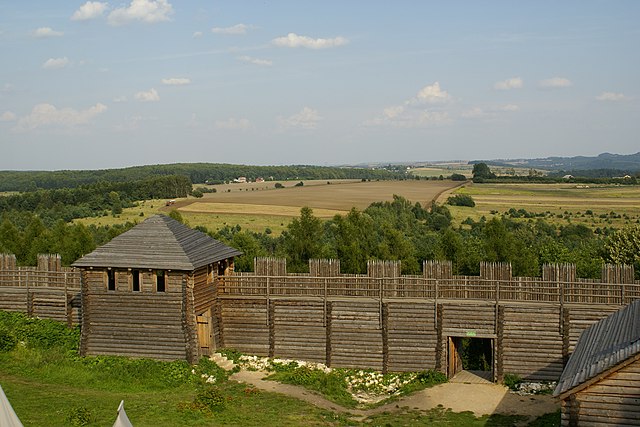The early Slavs were an Indo-European peoples who lived during the Migration Period and the Early Middle Ages in Central, Eastern and Southeast Europe and established the foundations for the Slavic nations through the Slavic states of the Early and High Middle Ages. The Slavs' original homeland is still a matter of debate due to a lack of historical records; however, scholars believe that it was in Eastern Europe, with Polesia being the most commonly accepted location.
Battle between the Slavs and the Scythians — painting by Viktor Vasnetsov (1881)
The approximate frequency and variance distribution of haplogroup I2-P37 clusters, ancestral "Dnieper-Carpathian" (DYS448=20) and derived "Balkan" (DYS448=19: represented by a single SNP I-PH908), in Eastern Europe per O.M. Utevska (2017).
Reconstruction of a Slavic gatehouse in Thunau am Kamp, Austria. The site excavated in the 1980s dates back to the era of the Great Moravia in the 9th and 10th centuries.
Reconstruction of a Slavic hilltop Gród in Birów, Poland
The Migration Period, also known as the Barbarian Invasions, was a period in European history marked by large-scale migrations that saw the fall of the Western Roman Empire and subsequent settlement of its former territories by various tribes, and the establishment of the post-Roman kingdoms.
A Migration Period Germanic gold bracteate depicting a bird, horse, and stylized human head with a Suebian knot
Slavic fibula brooch made of copper dating back to the Migration Period, c. 600–650 AD






